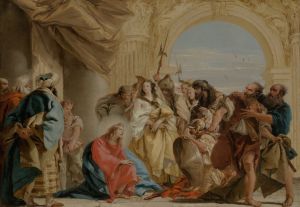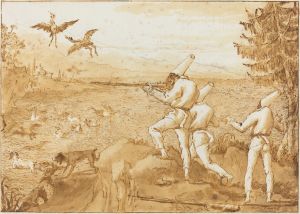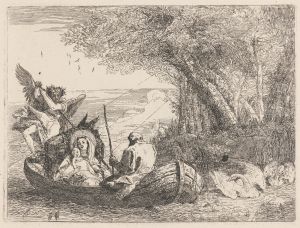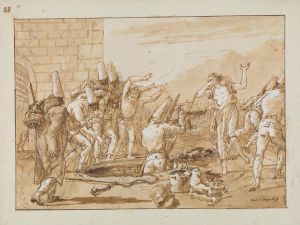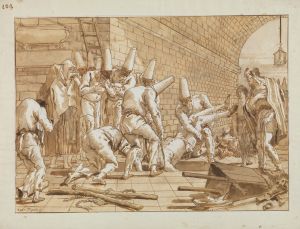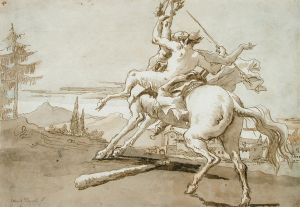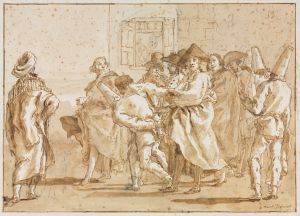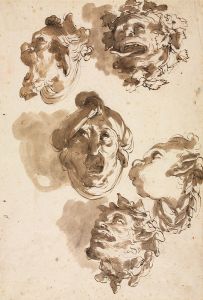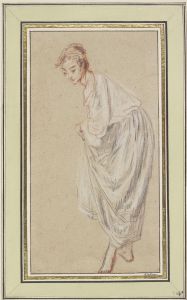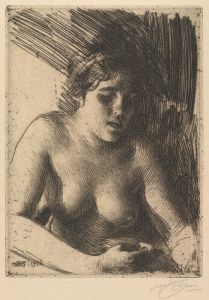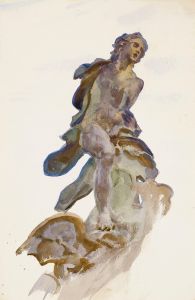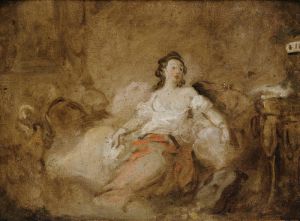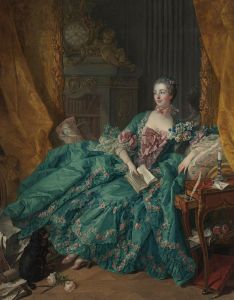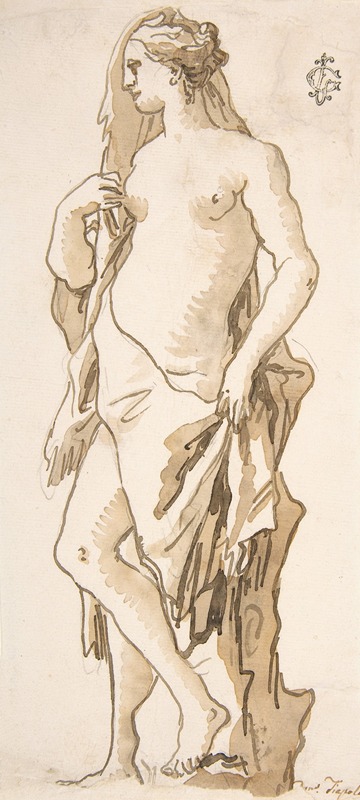
Study of a Garden Sculpture; Iole
A hand-painted replica of Giovanni Domenico Tiepolo’s masterpiece Study of a Garden Sculpture; Iole, meticulously crafted by professional artists to capture the true essence of the original. Each piece is created with museum-quality canvas and rare mineral pigments, carefully painted by experienced artists with delicate brushstrokes and rich, layered colors to perfectly recreate the texture of the original artwork. Unlike machine-printed reproductions, this hand-painted version brings the painting to life, infused with the artist’s emotions and skill in every stroke. Whether for personal collection or home decoration, it instantly elevates the artistic atmosphere of any space.
Giovanni Domenico Tiepolo, an Italian painter and printmaker, was the son of the renowned artist Giovanni Battista Tiepolo. Domenico, often working alongside his father, developed his own distinctive style that combined elements of the Rococo and Neoclassical movements. Among his diverse body of work is the piece titled "Study of a Garden Sculpture; Iole."
"Study of a Garden Sculpture; Iole" is a drawing that reflects Domenico Tiepolo's interest in classical themes and his skill in capturing the essence of sculpture through the medium of drawing. The artwork is a study, which suggests that it was likely intended as a preparatory work or an exploration of form and composition rather than a finished piece meant for public display. This type of study was common among artists of the period, who often used drawings to experiment with ideas and refine their techniques.
The subject of the drawing, Iole, is a figure from Greek mythology. Iole was the daughter of Eurytus, king of Oechalia, and is best known for her association with Heracles (Hercules). Her story is one of beauty and tragedy, as her presence in Heracles' life ultimately led to a series of events that culminated in his demise. The choice of Iole as a subject reflects the 18th-century fascination with classical mythology and its rich tapestry of human emotions and moral lessons.
In "Study of a Garden Sculpture; Iole," Tiepolo captures the grace and elegance of the mythological figure, likely drawing inspiration from classical sculptures that were popular during his time. The drawing showcases Tiepolo's ability to convey texture and depth, using light and shadow to bring the figure to life on paper. His attention to detail and understanding of anatomy are evident in the way he renders the human form, highlighting his training and expertise as an artist.
Domenico Tiepolo's work often included elements of humor and whimsy, but in this study, he appears to focus on the serene and contemplative aspects of the subject. This approach aligns with the Neoclassical interest in harmony, balance, and the idealized beauty of antiquity. The drawing may have been part of a larger series or project, as artists of the time frequently created multiple studies of a single subject to explore different perspectives and compositions.
While "Study of a Garden Sculpture; Iole" may not be as widely recognized as some of Tiepolo's other works, it provides valuable insight into his artistic process and the cultural influences of his era. The drawing exemplifies the blend of technical skill and creative exploration that characterizes much of Tiepolo's oeuvre. As with many works from this period, the study serves as a testament to the enduring appeal of classical themes and the timeless nature of mythological storytelling.
Overall, Giovanni Domenico Tiepolo's "Study of a Garden Sculpture; Iole" is a fine example of 18th-century art that bridges the Rococo and Neoclassical styles. It reflects the artist's mastery of drawing and his engagement with the classical past, offering a glimpse into the artistic practices and cultural interests of his time.






